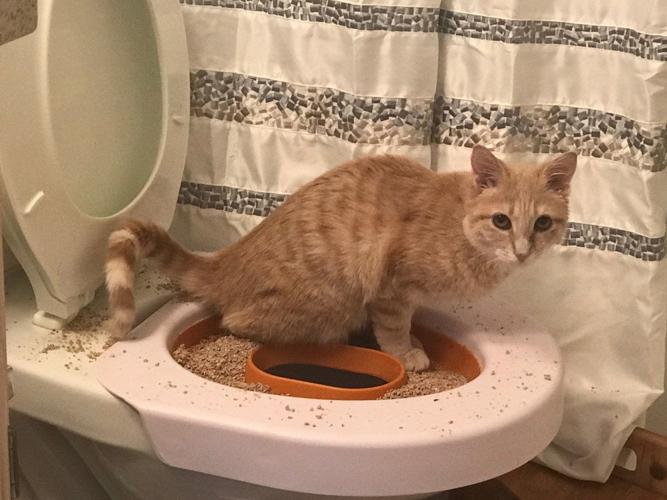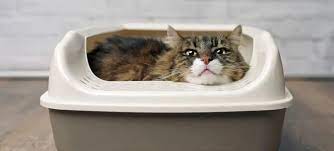This great article on the next paragraphs relating to 4 Reasons Why Dog Poop Cleanup is Important is particularly entertaining. You should take a peek.

When it involves disposing of waste, specifically animal waste, many individuals often turn to the practical alternative of flushing it down the toilet. However, this seemingly simple remedy can have significant consequences for the setting and public health. In this short article, we'll check out why flushing animal waste down the commode is a negative concept and give alternative methods for proper disposal.
Introduction
Proper garbage disposal is important for preserving environmental sustainability and public health. While it might appear harmless to purge animal waste down the toilet, it can lead to different issues, both for the setting and human health.
Dangers of flushing pet waste
Ecological influence
Flushing pet waste presents harmful germs and virus into rivers, which can negatively influence water ecosystems. These virus can pollute water sources and damage aquatic life, disrupting delicate ecosystems.
Public health problems
Animal waste has unsafe bacteria such as E. coli and Salmonella, which can present significant wellness threats to human beings. Flushing animal waste down the toilet can contaminate water products, resulting in the spread of diseases and infections.
Alternatives to flushing
Instead of flushing animal waste down the bathroom, there are several alternate disposal techniques that are a lot more environmentally friendly and hygienic.
Composting
Composting pet waste is an eco-friendly method to deal with it. By composting, raw material is broken down right into nutrient-rich soil, which can be utilized to feed gardens and plants.
Garbage dump disposal
Throwing away pet waste in a garbage dump is an additional alternative. While not as environmentally friendly as composting, it is a much safer option to flushing, as it protects against the contamination of water resources.
Pet garbage disposal systems
There are specialized animal waste disposal systems available that safely and hygienically throw away pet waste. These systems commonly utilize enzymes to break down waste and get rid of smells.
Steps to appropriate animal waste disposal
To make certain proper disposal of pet waste, follow these actions:
Scooping and landing waste
Consistently scoop and bag pet waste using naturally degradable bags. This stops waste from infecting the setting.
Using marked waste containers
Dispose of bagged pet waste in designated waste bins, such as compost bins or land fill containers. Avoid flushing it down the bathroom in any way prices.
Cleansing can and pet dog locations on a regular basis
Frequently clean can and pet dog areas to prevent the build-up of waste and germs. Use pet-safe cleansing products to preserve health.
Benefits of appropriate disposal techniques
Adopting correct disposal techniques for pet waste provides numerous benefits:
Decreased environmental pollution
Proper disposal techniques minimize the risk of environmental pollution, shielding rivers and ecological communities from contamination
Lessened danger of water contamination.
By avoiding flushing animal waste down the toilet, the threat of water contamination is significantly reduced, guarding public health.
Enhanced hygiene and health
Proper disposal methods advertise much better sanitation and health, creating a safer environment for both humans and pets.
Verdict
Finally, purging animal waste down the commode is dangerous to the setting and public health. By adopting alternative disposal methods and complying with proper waste administration methods, we can reduce the negative influence of animal waste and contribute to a cleaner, much healthier world.
What To Do With Dog Poo – The Do's And Don'ts Of Disposing Of Faeces
Dog poo bins
Some councils provide dedicated dog waste bins in popular dog-walking areas that can take dog poo that has been bagged but you can legally dispose of dog waste in any public litter bin, as long as it is securely bagged. This also applies to your wheelie bin at home.
Do not flush
Water companies do not recommend flushing dog faeces down the toilet because certain parasites can survive the water processing treatment and are potentially harmful to humans. You should also never consider flushing dog poo that has been bagged down the toilet as the bags will not break down and instead create severe blockages in the sewage system.
In the woods
The Forestry Commission promotes a ‘stick and flick’ method for dealing with waste in the woods. This means finding a stick and using it to flick any poo from off the path so that it is out of the way of other walkers. You could also bury it as long as it is not in an area where there might be livestock.
Livestock
Parasites found in dog poo can be transmitted to livestock if they inadvertently eat infected faeces that has been left on grazing land. This could result in the death of sheep or abortion in cattle so you should always make sure you pick up your dog’s waste in fields where livestock could be present.

Frequently clean can and pet dog areas to prevent the build-up of waste and germs. Use pet-safe cleansing products to preserve health.
Benefits of appropriate disposal techniques
Adopting correct disposal techniques for pet waste provides numerous benefits:
Decreased environmental pollution
Proper disposal techniques minimize the risk of environmental pollution, shielding rivers and ecological communities from contamination
Lessened danger of water contamination.
By avoiding flushing animal waste down the toilet, the threat of water contamination is significantly reduced, guarding public health.
Enhanced hygiene and health
Proper disposal methods advertise much better sanitation and health, creating a safer environment for both humans and pets.
Verdict
Finally, purging animal waste down the commode is dangerous to the setting and public health. By adopting alternative disposal methods and complying with proper waste administration methods, we can reduce the negative influence of animal waste and contribute to a cleaner, much healthier world.
What To Do With Dog Poo – The Do's And Don'ts Of Disposing Of Faeces
Dog poo bins
Some councils provide dedicated dog waste bins in popular dog-walking areas that can take dog poo that has been bagged but you can legally dispose of dog waste in any public litter bin, as long as it is securely bagged. This also applies to your wheelie bin at home.
Do not flush
Water companies do not recommend flushing dog faeces down the toilet because certain parasites can survive the water processing treatment and are potentially harmful to humans. You should also never consider flushing dog poo that has been bagged down the toilet as the bags will not break down and instead create severe blockages in the sewage system.
In the woods
The Forestry Commission promotes a ‘stick and flick’ method for dealing with waste in the woods. This means finding a stick and using it to flick any poo from off the path so that it is out of the way of other walkers. You could also bury it as long as it is not in an area where there might be livestock.
Livestock
Parasites found in dog poo can be transmitted to livestock if they inadvertently eat infected faeces that has been left on grazing land. This could result in the death of sheep or abortion in cattle so you should always make sure you pick up your dog’s waste in fields where livestock could be present.
I ran across that article on Should you flush animal waste down the toilet while browsing on the internet. Sharing is nice. Helping people is fun. Thanks for your time spent reading it.
Order Repair